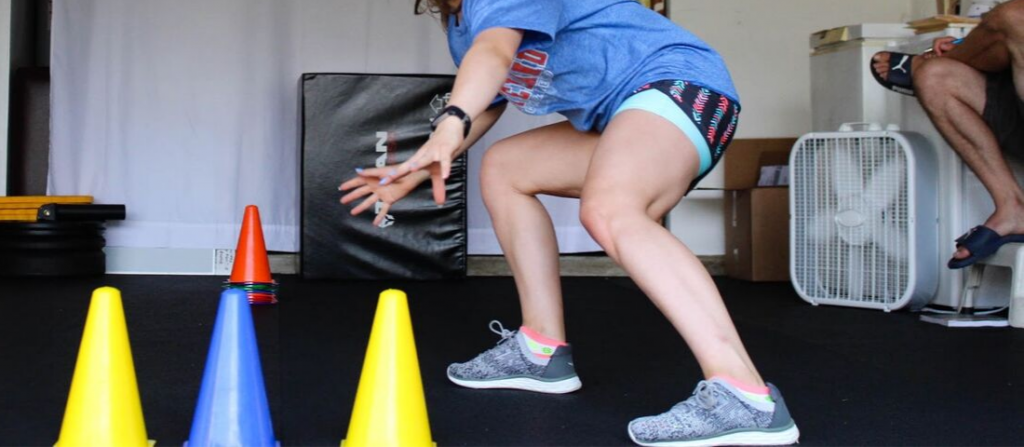Below I have listed three of several speed cutting techniques athletes must become proficient at in order to improve performance and reduce injury potential.
Let’s Take A Closer Look
Cutting is an example of a natural repositioning movement which allows the athletes to quickly use an appropriate angle to change the path of the body. The key to cutting is to be as quick as possible. In order to be as quick as possible, the mass and momentum of the athletes must be controlled.
There are some cuts that will be extremely fast, while others will use separation tactics to get the defender off which allows for a slower cutting technique to still create space.
Cutting is used to position athletes into open space so plays can be made. If a defender cuts, then it is a reaction to the offensive player’s tactic. In actuality, the defenders cutting must be more precise due to the fact they do not know what the offensive players is going to do.
Cutting Techniques
Check out the three cutting techniques that will set an tremendous foundation of teaching basic cutting skills.
#1 Rehearsed Patterning to Learn Proper Mechanics of Cutting
The purpose of this step is to make sure the athletes understand the mechanics of cutting. You don’t need to over coach them. Simple make sure they have proper foot placement and body alignment.
- With slalom cutting the athletes will make cuts at 45 degrees and at every 5 yards.
- Run half speed to the cone and plant the foot sharply and with the toes straight ahead (not turned out) so they can dorsi-flex the ankles.
- Hips should remain fairly level with minimal dipping. The key is to already be fairly low going into the cut so time isn’t wasted bending down at the cut.
- Explode out of the cut to the next cone. Perform this exercise 4-6 times with approximately six cones.
#2 Random Cutting
This is all executed on the coach’s command. The athlete simply makes a cut when the coach says, “cut”. Being more random will force the athlete to be on balance and under control at all time. The coach must be careful not to create a pattern. You do not want the athlete to anticipate the cut. Be sure to make it random.
- Be sure the athlete has good control with the shoulders. You don’t want them to carry past the cutting area.
- The hips should be strong and not over bend or squat during the cut. The athlete should already be in a prepared position to make the cut.
- The foot needs to be straight a head and not turned out. If the athlete turns the foot out, then dorsiflexion is lost in the ankle and a reduction in power will result.
- Be sure to accelerate to the next cone by driving the cutting leg into the ground aggressively and leaning the shoulders in the new direction
#3 Jump Stop and Cut
This form of cutting is to deceive the opponent or to gather ones balance before changing direction.
- The athlete needs to land in a two foot jump or split stance position. Immediate cut at a 45 degree angle to the next direction. This drill can be done random or rehearsed.
- The athletes needs to come into the jump stop under control and prepared to cut out of it quickly.
- This is a great way to slow a defender down and think you are stopping and then explode by them.
- This technique is used when you approach a defender quickly and need to get under control and react to his or her move and get out of the way.
To learn more detail and many cutting techniques take a look at Ground Breaking 2.

